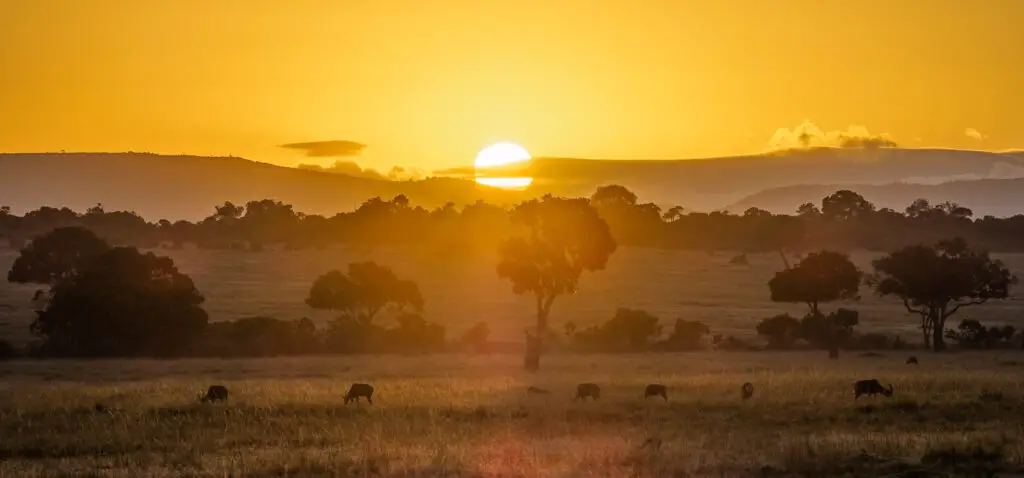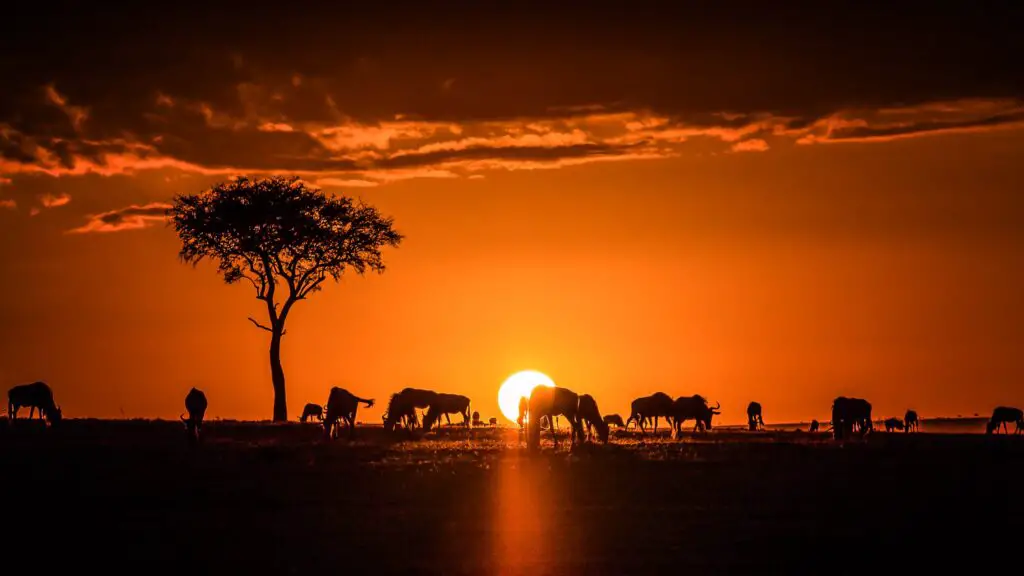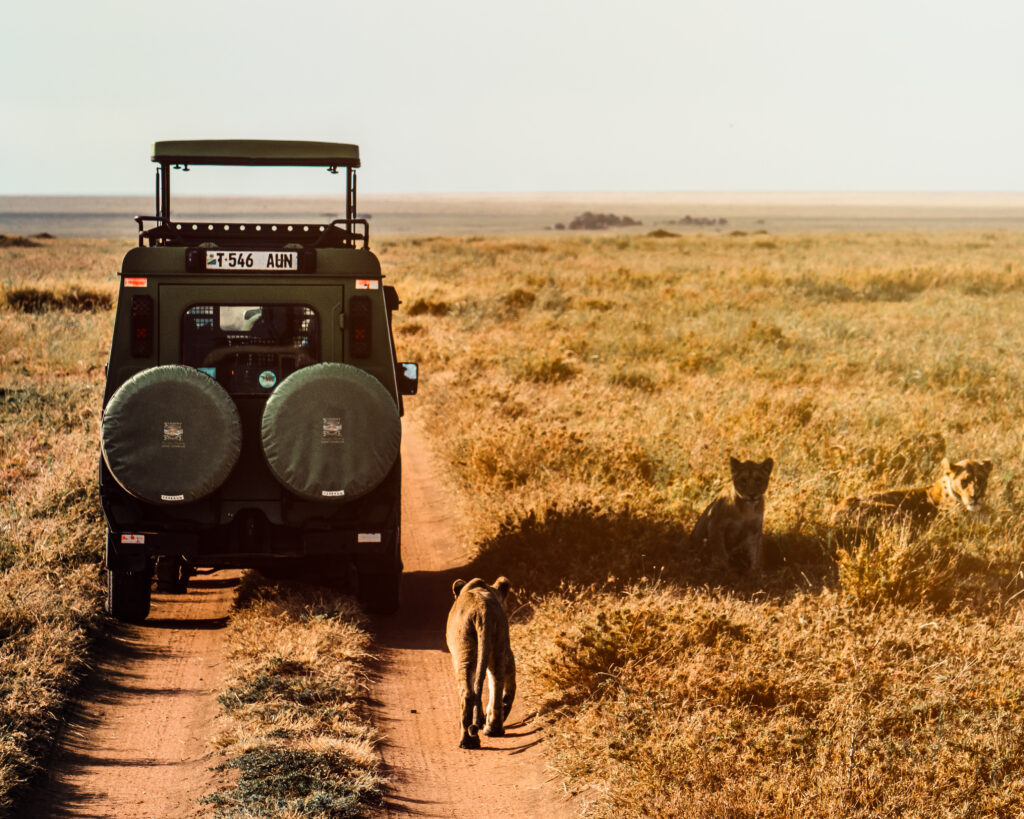Experiencing the Wild Wonders of Masai Mara: A Journey into Kenya’s Safari Paradise
Welcome to the untamed beauty of Masai Mara, a wildlife haven located in Kenya, East Africa. Known for its breathtaking landscapes, diverse wildlife, and the annual Great Migration, Masai Mara is an absolute dream destination for nature enthusiasts and adventure seekers alike. In this blog post, we will delve into the wonders of Masai Mara and explore the unique experiences that await visitors in this mesmerizing safari paradise.

1. An Introduction to Masai Mara:

Situated in southwestern Kenya, Masai Mara is an expansive national reserve that spans over 1,500 square kilometers. Its name is derived from the Maasai people, who have inhabited the region for centuries, coexisting harmoniously with the abundant wildlife. The reserve is known for its picturesque landscapes, which encompass vast plains, rolling hills, acacia forests, and meandering rivers.
2. The Great Migration:
The Great Migration in Masai Mara stands as one of the most remarkable natural phenomena on our planet.. Every year, millions of wildebeests, zebras, and other herbivores undertake a treacherous journey from the Serengeti National Park in Tanzania to Masai Mara in search of fresh grazing grounds. This awe-inspiring event, often touted as the “greatest show on Earth,” offers a once-in-a-lifetime opportunity to witness the circle of life and the raw power of nature.
3. Abundant Wildlife:
Masai Mara boasts an incredibly diverse ecosystem, making it home to an impressive array of wildlife. Alongside the migrating herds, visitors can spot majestic African elephants, graceful giraffes, stealthy leopards, and the iconic African lion, known for its regal presence. Cheetahs, hyenas, buffaloes, and a myriad of bird species also inhabit the reserve. The abundance of wildlife ensures thrilling game drives and extraordinary encounters with nature’s finest.
4. The Maasai People and Cultural Immersion:
The Maasai people, renowned for their rich culture and deep connection to the land, have inhabited this region for centuries. Visiting Masai Mara offers a unique opportunity to engage with the Maasai and learn about their traditions, beliefs, and way of life. Local villages provide an immersive cultural experience, where visitors can interact with the Maasai, witness their traditional dances, and purchase authentic handmade crafts as souvenirs.
5. Balloon Safaris and Aerial Perspectives (Masai Mara Safari):
For an unforgettable experience, consider embarking on a hot air balloon safari over Masai Mara. As the sun rises, you’ll ascend into the sky, offering panoramic views of the vast plains below, teeming with wildlife. The tranquil journey allows you to witness the dramatic landscape unfold beneath you, capturing stunning photographs and creating lasting memories.
6. Conservation Efforts and Responsible Tourism:
Masai Mara serves as a vital conservation area, dedicated to preserving the delicate balance between humans and wildlife. Several initiatives are in place to protect endangered species, combat poaching, and promote sustainable tourism practices. When visiting Masai Mara, it is essential to support responsible tourism, respect the environment, and contribute to the local communities, ensuring the preservation of this natural treasure for future generations.
Conclusion:
Masai Mara, with its remarkable landscapes, abundant wildlife, and the awe-inspiring Great Migration, offers a truly transformative experience for nature lovers. From thrilling game drives to cultural immersions with the Maasai people, the reserve provides an opportunity to connect with the raw beauty of the African wilderness. By visiting Masai Mara and supporting responsible tourism, you contribute to the conservation efforts aimed at protecting this extraordinary ecosystem. So, pack your bags, embark on a safari adventure, and let Masai Mara unveil its wonders to you, leaving you with memories that will last a lifetime.

FAQ’S Regarding Masai Mara

Q1: When is the best time to visit Masai Mara to witness the Great Migration?
A1: The Great Migration usually takes place between July and October, with the exact timing depending on weather conditions and the movement of the herds. To witness this remarkable event, it is recommended to plan your visit during these months.
Q2: Are there any accommodation options available in Masai Mara?
A2: Yes, there are various accommodation options available in and around Masai Mara, catering to different budgets and preferences. You can choose from luxury lodges, tented camps, and even mobile camps that move along with the migration. It is advisable to book your accommodations in advance, especially during peak tourist seasons.
Q3: Is it safe to go on a safari in Masai Mara?
A3: Masai Mara is generally considered safe for tourists. However, it is essential to follow the guidance of your experienced safari guide and adhere to the rules and regulations of the national reserve. It is also advisable to take necessary precautions, such as avoiding close encounters with wildlife and listening to the instructions provided by your guides.
Q4: How long should I plan for a visit to Masai Mara?
A4: The duration of your visit to Masai Mara depends on your preferences and the experiences you wish to have. A minimum of three to four days is recommended to fully explore the reserve, enjoy multiple game drives, and increase your chances of witnessing the Great Migration. However, some visitors choose to spend more time in order to fully immerse themselves in the wildlife and cultural experiences Masai Mara has to offer.
Q5: Can I take children on a safari to Masai Mara?
A5: Yes, children can definitely enjoy a safari experience in Masai Mara. However, it is important to consider their age, interests, and ability to follow instructions during the game drives. Some lodges and camps may have age restrictions or specific guidelines for children, so it is advisable to check with your chosen accommodation provider beforehand.
Q6: Are there any additional activities apart from game drives in Masai Mara?
A6: Alongside game drives, there are various additional activities available in Masai Mara. These include nature walks, guided bush treks, visits to Maasai villages, hot air balloon safaris, and birdwatching. These activities provide different perspectives and allow you to further explore and appreciate the natural beauty of the reserve.
Q7: How can I contribute to conservation efforts in Masai Mara?
A7: To contribute to conservation efforts in Masai Mara, you can support local initiatives, such as community-based conservation projects or wildlife protection organizations. Additionally, you can practice responsible tourism by respecting the environment, following the rules and guidelines set by the national reserve, and supporting eco-friendly accommodations and tour operators.
Q8: Are there any restrictions on photography in Masai Mara?
A8: Generally, there are no specific restrictions on photography in Masai Mara. However, it is important to be respectful of both the wildlife and the local communities. It is advisable to maintain a safe distance from the animals, avoid using flash near them, and always ask for permission before photographing the Maasai people or their villages.
Q9: Can I self-drive in Masai Mara, or do I need a guide?
A9: It is highly recommended to have an experienced guide or join a guided tour when visiting Masai Mara. The reserve has vast and complex terrain, and a knowledgeable guide can provide valuable insights, ensure your safety, and enhance your wildlife viewing experience. Self-driving is generally not recommended due to the challenging conditions and the potential risks associated with encountering wild animals.
Q10: Is there a limit on the number of visitors allowed in Masai Mara?
A10: Masai Mara does not have a strict limit on the number of visitors allowed. However, to preserve the natural environment and ensure a high-quality experience for all, the national reserve has implemented guidelines and regulations to manage visitor numbers and minimize the impact on the ecosystem. It is always advisable to book your visit in advance and adhere to the guidelines set by the reserve authorities.
Also Read
15 Landmarks To Visit Before You Turn 65
Rainwater Harvesting: An Eco-Friendly Approach to Water Conservation
Tabora: Exploring the Heart of Tanzania
25 South Indian Food Near Me In USA: Where Tradition Meets Taste
Ear Troubles? Learn How to Get Water Out of Your Ear
Contents
Follow us on Youtube
Follow us on Facebook
Follow us on Twitter
Follow us on Instagram
Also Read
15 Landmarks To Visit Before You Turn 65
Rainwater Harvesting: An Eco-Friendly Approach to Water Conservation
Tabora: Exploring the Heart of Tanzania
25 South Indian Food Near Me In USA: Where Tradition Meets Taste
Ear Troubles? Learn How to Get Water Out of Your Ear

